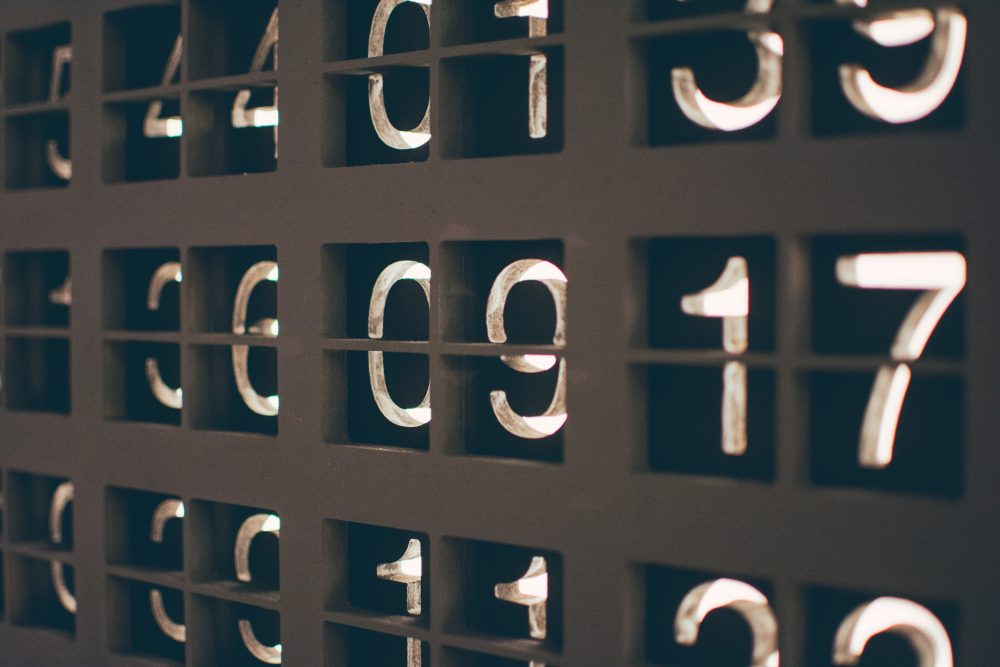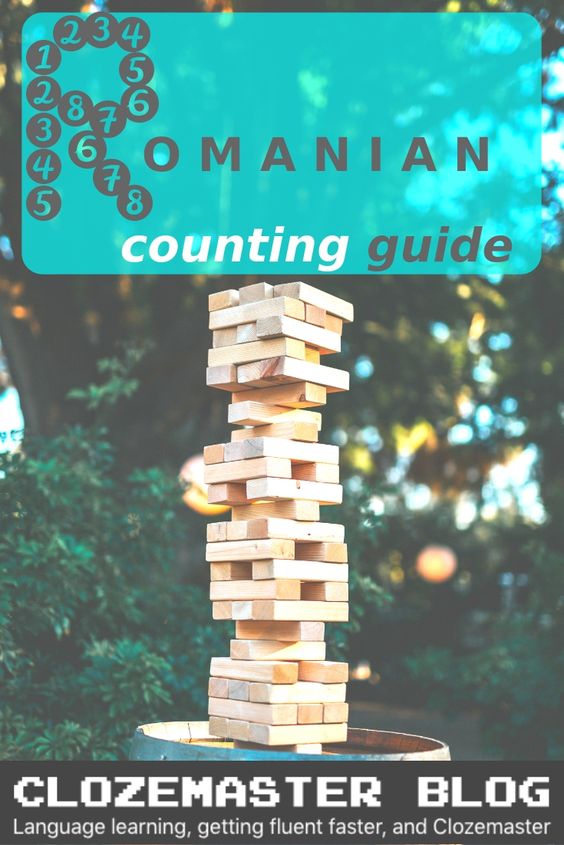
The Numerals in Romanian, simple or compound, follow regular patterns:
- 1 (unu)
- 2 (doi)
- 3 (trei)
- 4 (patru)
- 5 (cinci)
- 6 (șase)
- 7 (șapte)
- 8 (opt)
- 9 (nouă)
- 10 (zece)
- 11 (unsprezece / written and oral / unșpe /oral only)
- 12 (doisprezece, doișpe)
- 12 (treisprezece, treișpe)
- 14 (paisprezece, paișpe)
- 15 (cincisprezece, cinșpe)
- 16 (șaisprezece, șaișpe)
- 17 (șaptesprezece, șaptișpe)
- 18 (optsprezece, optișpe)
- 19 (nouăsprezece, nouășpe)
- 20 (douăzeci)
- 21 (douăzeci și unu)
- 22 (douăzeci și doi)
- 30 (treizeci)
- 40 (patruzeci)
- 50 (cincizeci)
- 60 (șaizeci)
- 70 (șaptezeci)
- 80 (optzeci)
- 90 (nouăzeci)
- 100 (o sută)
- 101 (o sută unu)
- 102 (o sută doi)…
- 200 (două sute)
- 300 (trei sute)
- 1.000 (o mie)
- 2.000 (două mii)
- 1.000.000 (un milion)
- 2.000.000 (două milioane)
- 1.000.000.000 (un miliard)
- 2.000.000.000 (două miliarde)
In Romanian there are two basic numeric structures:
- Numeral (1-19) + Noun:
trei studenți,
șapte cărți,
unsprezece ziare
nouăspreze lei
- Numeral (20 to 999999…) + de + Noun:
douăzeci de studenți
treizeci și cinci de cărți
o sută șaptezeci de ziare
două mii de lei
Unlike the rest of the numerals, the number ‘1’ has a more complicated status:
- When next to a noun, it is identical with the indefinite article.
| Case | Masc. & Neuter | Fem. |
| N – Ac. | un | o |
| G – D | unui | unei |
Examples:
- Am cumpărat o singură carte pe care i-am dat-o unui student.I bought only one book which I gave to a/one student.
- Sometimes this numeral has a ‘pronoun’ value.
| Case | Masc. & Neuter | Fem. |
| N – Ac. | unul | una |
| G – D | unuia | uneia |
Examples:
- Cât despre studenți, unul a plecat deja la București și una e pe drum.As for students, one has already left for Bucharest, and one is on her way.
While the numeral ‘1’ has become a pronoun, with all the inflections of pronouns, the numeral ‘2’ only has a feminine form. Compound numerals containing ‘1’ or ‘2’ as their last digit follow the same rules.
- Am fost la masă cu doi americani și două nemțoaice.We went out to lunch/dinner with two American men and two German ladies.
The ordinal numerals are also devided by gender / number:
- primul (întâiul) – prima (întâia) = the first (masc. and fem. sg.)primii – primele = the first (masc. and fem. pl.)
- al doilea – a doua = the second (masc. and fem. sg.)
- al treilea – a treia = the third (masc. and fem. sg)
- al patrulea – a patra = the fourth (masc. and fem. sg.), etc.
‘Primul’ and ‘prima’ excluded all the other ordinal numerals receive:
- ‘al’ + cardinal numeral + ‘lea’ for masculine singular
- ‘a’ + cardinal numeral + ‘a’ for feminine singular
The plural forms for masculine and feminine are rarely used.
Examples:
- În primul rând, vreau să vă mulțumesc pentru ospitalitate.First of all (in the first place) I would like to thank you for your hospitality.
- Aceasta a fost a cincea carte a Rodicăi Ojog Brașoveanu.This was Rodica Ojog Brașoveanu‘s fifth book.
- Prietenul nostru a terminat cursa al doilea.
Our friend finished the race in second place.
Learn and practice hundreds of Romanian numbers in context with Clozemaster!
This article is Chapter 7: Numerals of the Foreign Service Institute’s Romanian Reference Grammar, Copyright: Attribution Non-Commercial (BY-NC).
Hoffman CN. Romanian reference grammar. Foreign Service Institute, U.S. Department of State, 1989.


